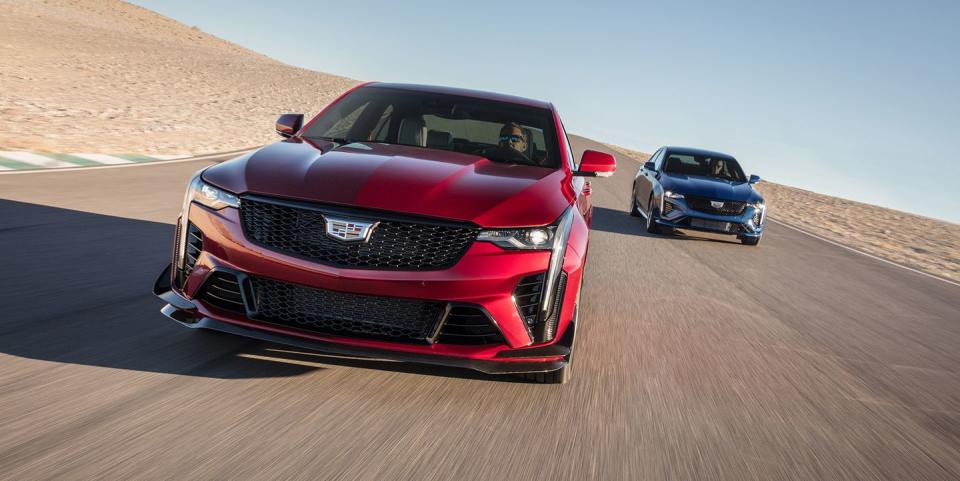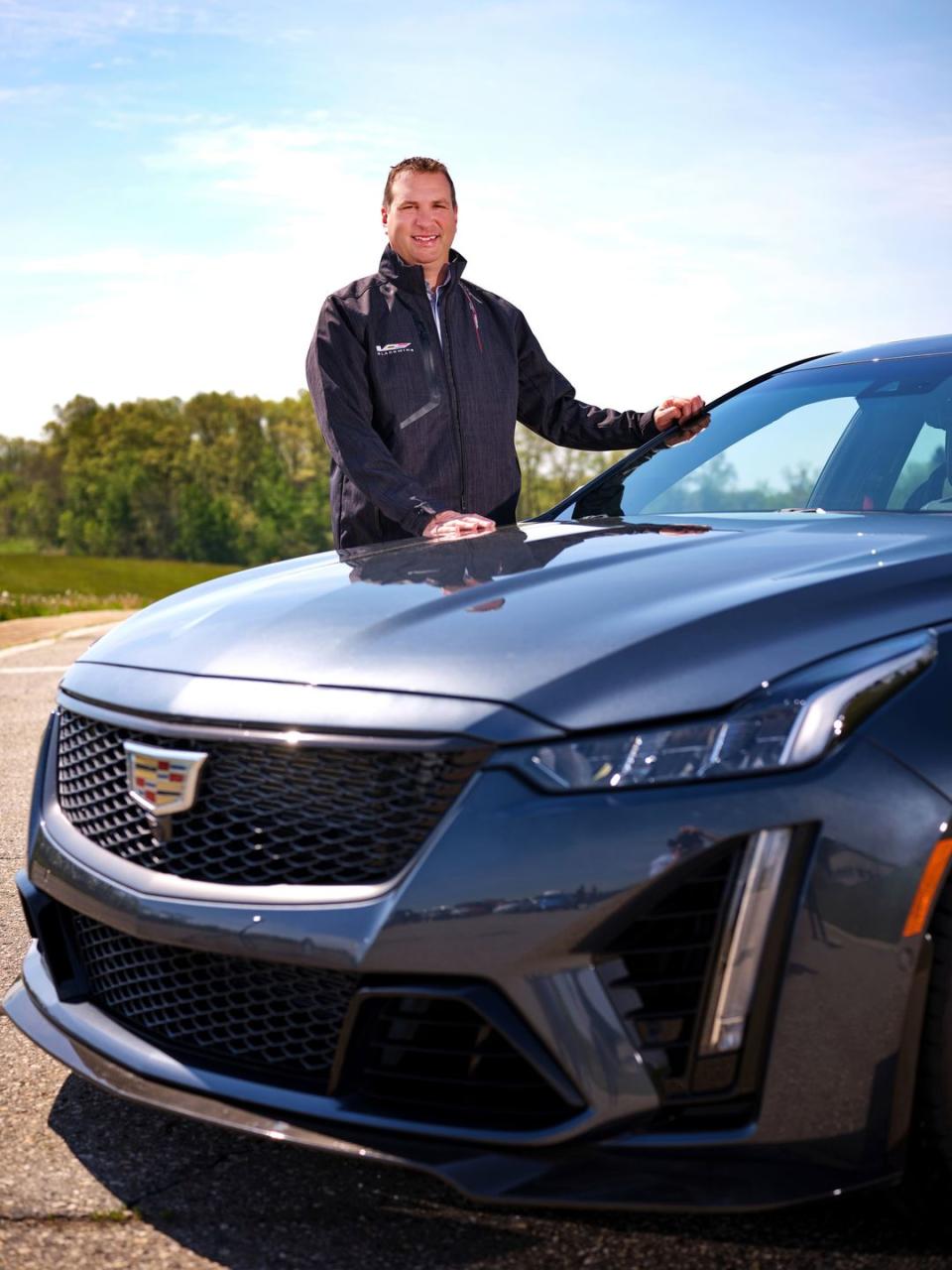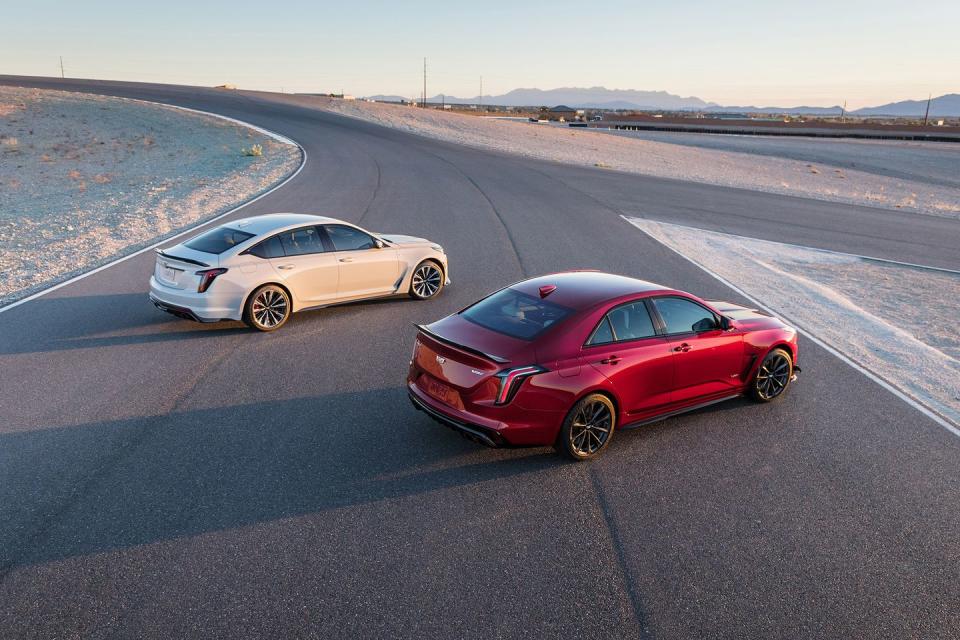Cadillac Keeps Tabs on Customers Who Track V-Series Cars

If you own a Cadillac V-series car and track it regularly, Cadillac is probably aware of it. Not because your car is sending black-box data to some dark, hidden room in Warren, Michigan, but because Cadillac is putting in due diligence to determine which of its V-series cars are getting tracked and where. Brandon Vivian, Cadillac's chief engineer, says there's no nefarious motive here.
"We keep tabs on that once a month in my staff meeting. We have a report of who's been using their cars at which track days," Vivan says. "So we watch you very closely. People don't maybe realize that's what we're doing, but we do get reports out of some of our clubs around the country, our V-Club, what track events they were at and who was there. And we also have a network of passionate enthusiasts that will give us input on how many ATS-Vs or CTS-Vs were at a particular track event."
Why do this? Because Cadillac is serious about making track cars, and its engineers want to know if its cars are being flogged on America's many road courses, and how they're doing. And that gives us high hopes for the upcoming CT4-V and CT5-V Blackwing.
Something else that gives us high hopes: their predecessors. If you don't intensely follow the minutiae of Cadillac nomenclature changes, you might not realize that these two cars are the successors to the much-loved ATS-V and CTS-V, two cars that could hang with BMW’s best M cars and did so with a distinctly American flair. The CT4-V Blackwing is a heavy revision of the ATS-V with an updated 3.6-liter twin-turbo V-6; for the CT5-V Blackwing, Cadillac takes the engine from the old CTS-V, raises the power, and puts it in an ever-so-slightly smaller car.

Both cars offer a manual transmission, which is unusual among their competitive set. Only the BMW M2 and M3/M4 also offer a manual; everyone else has long-since gone exclusively automatic. Vivian claims Cadillac put in the effort to offer a manual simply to satisfy customer demand. "The first two questions we would get all the time are 'What about a manual, and what about a wagon?'" he says. The wagon isn't a possibility; though Vivian is well aware of the cult status of the CTS-V Wagon, the old CTS and CTS-V wagons sold very poorly when new, and consumer tastes have shifted even further away from wagons in the intervening years.
A manual was a far more realistic possibility for these sedans, as Cadillac already had the basic hardware ready to go. The old ATS-V was always offered with a manual, and while the previous CTS-V wasn't, GM's LT4 supercharged small-block is paired with a manual in the Camaro ZL1. Both cars will use the venerable Tremec TR6060 six-speed, with a 10-speed auto available as an option.
Customer demand is of course key, but Vivian also says that offering a manual was important given this unique moment in automotive history. Like much of the automotive world, Cadillac is headed towards an all-electric future. "We want to go out and basically say 'this is the last V-8 manual and [these] may be the last manuals, when it's all said and done, in performance sedans,'" he says.
It's not just drivetrain hardware that's updated for these cars; Vivan details revisions to chassis to increase structural rigidity, to GM's excellent Performance Traction Management (PTM) system, and to the standard MagneRide dampers. Those shocks now even compensate for outside temperature. "Just like any fluid, viscosity changes with temperature, right?" Vivian says. And as was the case with previous V cars, the CT4- and CT5-V Blackwing will use relatively small 18- and 19-inch wheels, respectively, which reduce unsprung weight. That in turn brings benefits in ride and handling. And further down the road, a new magnesium alloy wheel will be available to further reduce unsprung mass.

The Blackwing twins have all the right ingredients to be excellent track cars. Vivian says Cadillac tested each extensively at Virginia International Raceway, Willow Springs, Circuit of the Americas, Grattan, Pitt Race, and GM's own Milford Proving Ground. If these cars work there, they'll probably work at any road course in America.
We'll find out for ourselves how the Blackwings perform in due course, but it's hard not to be swayed by Vivian's words alone. You get the sense that everyone working on these cars knew they'd likely be the last of their type. Given that knowledge, you want to go out on a high.
You Might Also Like

 Yahoo Autos
Yahoo Autos 